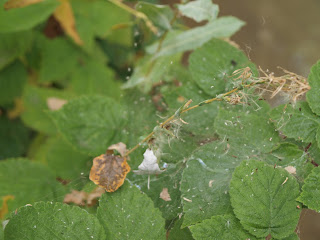The Land of the Oz
Stepping carefully into Australia
The author of this article, Bill Hatcher, writes about his adventure into living in the new land to him from the Colorado Plateau to, Australia. The place he resides to is just on the outskirts of Sydney, Australia which resembles much of America’s southwest desert. The great thing for him, however, is that he does not live far from what is called the Australian Bush. The “bush” contains a massive variety of animals including some of the worlds’ most venomous snakes and spiders, which I might add that the spider thing would not be to my favor in any way shape or form. He asks a very important question to himself for living, and also as a photographer as well.
Since the author plans to be living in Australia for a few years, “as a photographer who often goes off the beaten path to shoot photos,” he asks, “ is just how dangerous is the Australian countryside. For his own knowledge, he does much needed background research on the wildlife both where he lives and in the Australian bush. Something that I found interesting that he had noted is that 11 of the world’s 15 most venomous snakes reside there in Australia, and that is including the sea snake, tai pan, and king brown snake. It is also full of many other types of wildlife such as tropical birds, much of what you would find in a jungle because the Australian bush is basically a jungle.
Bill’s main worry as a photographer, however, will rely on him being careful with his steps and observing not only surroundings, but the ground around as well. Most people whom get bitten by venomous snakes in the bush are generally bitten in the ankle, which can mean only one thing. For the most part people step on the snake or in its space causing it distress and then it bites. He explains that most of the snakes in the bush are not aggressive and just reclusive and the disruptions disturb their peace. The reason a snake could be considered most deadly is because they tend to have more human encounters, Bill explains.
The Masters of the European Landscapes
England
The author, William Sawalich, begins the article with the fact that American photographers began the foundations for modern mainstream landscape photography. In comparison to American landscapes, the author believes that European photographers emphasize intimate landscapes more so than vista. European photographers as well are concerned more with the form or abstraction and simplicity that are less location sensitive. In exploration of abstraction he says that the perspectives are less dramatic and the lighting is more quietly portrayed. Sawalich makes a good point about photography in his eyes, and kind of falls true to photography as I see it as well.
What fascinates him about photography is , “How an art form, on one level, the most perfectly descriptive, yet invented by man can transcend the overwhelming weight of bald description to evoke something unexpected. “ I think it’s neat to think about the world in a photographic kind of way, which is how I believe the author means it. To see many or all of the things you look at and view, and turn it into the vision of a picture. There are so many plain and simple sights that we see every day, and if we were able to convert that into a picture itself, it would portray much more than what was seen at the time. This all leads into what the photographer/author says to be his favorite place to photograph.
“My favourite place to photograph is the one with which I’m emotionally engaged at the time I’m making that image; all other locations pale at that moment. I feel like the author is very right about his statement. A picture is only at its best when the photographer him or herself is really feeling the shot and has full confidence that “this is the one”. Sure, there are many times that you can go out randomly shooting and get a really nice photo, but the true great picture would be that one that you want and emotionally feel enlightened when the shot is achieved.











